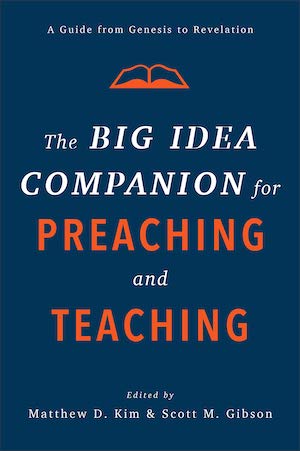Preaching is hard work. Intellectually, it requires the ability to discern the original meaning and contemporary relevance of a Bible passage, then to communicate both in a memorable way. Practically, it demands that pastors do this for different texts on Sunday and Wednesday, all the while staying on top of their other ministry responsibilities.
No wonder ministers resort to books containing sermon outlines, illustrations, and the like! I use such books personally and support others using them too, though with two qualifications:
First, the books should aid a preacher’s hard work, not substitute for it. Preachers don’t need to reinvent the wheel every time they prepare a message. By the same token, however — and to switch metaphors — they shouldn’t let someone else drive their sermon.
Second, the books should be chosen with care. Not all purported preaching aids are helpful. Some misinterpret a Bible passage’s original meaning, others misapply it to contemporary society, and still others offer bad advice on the content, form and delivery of a sermon. So, caveat lector!
With these qualifications in mind, I recommend adding The Big Idea Companion for Preaching and Teaching to your library. Editors Matthew D. Kim and Scott M. Gibson are homiletics professors at Gordon-Conwell Theological Seminary and Truett Theological Seminary, respectively. Each has published several books about preaching. The other 26 authors who contributed to this book have relevant academic training and ministry experience. All are evangelical Christians committed to the faithful exposition of God’s Word.
They also are disciples of the late Haddon W. Robinson, who pioneered the “big idea” school of expository preaching. In his book, Biblical Preaching, Robinson wrote, “Ideally each sermon is the explanation, interpretation, or application of a single dominant idea supported by other ideas, all drawn from one passage or several passages of Scripture.”
To develop that “big idea” for a sermon, Robinson encouraged preachers to identify the subject and complement of the Bible passage about which they were preparing to preach. He defined subject as “the complete, definite answer to the question, ‘What am I talking about?’” He defined complement as “the answer to the question, ‘What exactly am I saying about what I’m talking about?’”
Once preachers have identified the subject and complement of a Bible passage, they formulate the exegetical idea of the passage, as well as the homiletical idea of their sermon. The exegetical idea is a one-sentence statement of the passage’s original meaning. Robinson offers this definition of the homiletical idea: “the statement of a biblical concept in such a way that it accurately reflects the Bible and meaningfully relates to the congregation.”
What makes The Big Idea Companion for Preaching and Teaching valuable is that it identifies the subject, complement, exegetical idea, and homiletical idea for hundreds of passages spread across all 66 books of the Bible.
Let me illustrate this by quoting Joel C. Gregory on 1 Corinthians 13:
SUBJECT: What does Paul tell the Corinthian church is the defining nature of Christian love? [The subject is always stated as a question in “big idea” preaching.]
COMPLEMENT: It is not an emotion but rather is always seeking the highest good of the other person. [The complement is always stated as the answer to the subject’s question.]
EXEGETICAL IDEA: Paul tells the Corinthian church that the defining nature of Christian love is that it is not an emotion but rather is always seeking the highest good of the other person.
HOMILETICAL IDEA: We can demonstrate our Christian love by always seeking the highest good of the other person, regardless of emotions or circumstances.
In addition to identifying subject, complement, and exegetical and homiletical ideas for hundreds of passages of Scripture, Big Idea Companion provides readers “(1) a brief introduction to the big idea of the entire book, (2) tips on how to divide the book into preaching and teaching pericopes, (3) guidance on difficult passages and verses, (4) cultural perspectives to facilitate faithful application, and (5) recommended resources for interpreting, preaching, and teaching each book.”
As with any multi-author book, the quality of the contributions varies. For example, some authors covered every chapter in their assigned book of the Bible, but others did not. This was especially true in the chapters about the Bible’s longer books.
Additionally, I wish the editors had included a one-chapter summary of “big idea” preaching. As it is, I had to revisit my copy of the second edition of Robinson’s Biblical Preaching for a quick reminder. Readers who haven’t read Robinson or trained in that school of preaching may find themselves a bit lost when they start reading the book.
I don’t want to leave the impression that any of the contributions were bad or unhelpful, however. I would rank the contributions along a spectrum from competent to excellent. The overall quality of the book is quite good.
And so, I recommend The Big Idea Companion for Preaching and Teaching to busy pastors looking for intellectual and practical help with their sermons. The book won’t eliminate the hard work of preaching entirely, but it will help lighten the load.
Book Reviewed
Matthew D. Kim and Scott M. Gibson, eds., The Big Idea Companion for Preaching and Teaching: A Guide from Genesis to Revelation (Grand Rapids, MI: Baker Academic, 2021).
P.S. If you liked my review, please click “Helpful” on my Amazon review page.
P.P.S. This review is cross-posted from InfluenceMagazine.com by permission.

